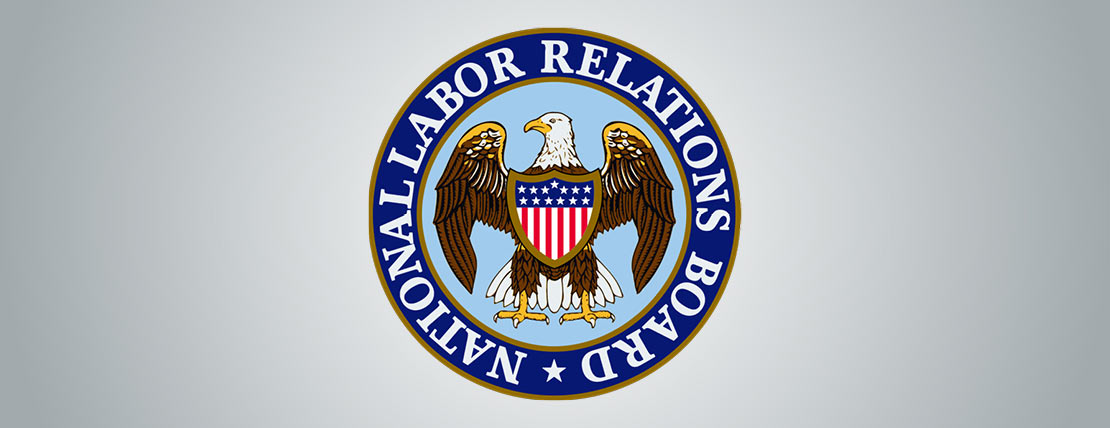For WorldatWork Members
- Engage Community, peer engagement and connection platform
- Are You Aware of These Free DOL Employment Law Resources? Workspan Daily Plus+ article
- Deduction Reasoning: Are You Applying This Part of the FLSA Correctly? Workspan Daily Plus+ article
For Everyone
- The Precedent vs. the President: Rule Void Would Have TR Repercussions, Workspan Daily article
- Trump Order Puts Independent Federal Agencies Under His Control, Workspan Daily article
- Appeals Court Temporarily Allows Trump’s Firing of Agency Leaders, Workspan Daily article
- Acting NLRB General Counsel Rescinds Agency Memos on Noncompetes, Workspan Daily article
In a court case that has been closely watched by political, legal and business experts, the U.S. Court of Appeals for the Fifth Circuit on Tuesday, Aug. 19, ruled the structure of the National Labor Relations Board (NLRB) is likely unconstitutional.
The implications to employers and their total rewards professionals — as well as to American private-sector workers — are significant but not completely clear at the moment. Additional context and guidance from the court system, including the Supreme Court, is likely upcoming.
How We Got to This Point
Unpacking the Fifth Circuit court decision begins with a brief history recap:
- The National Labor Relations Act (NLRA) was created in 1935 to protect workers’ rights to organize (i.e., unionize) and bargain collectively over the terms of their employment (i.e., wages and hours, working conditions).
- To enforce these rights, the NLRA laid the foundation for the NLRB, an independent federal agency that serves as both the prosecutor and arbiter over alleged violations.
- The judicial arbitration function is carried out by administrative law judges (ALJs) appointed by the NLRB, whose members are appointed by the U.S. president.
- The NLRA greatly limits the reasons for which ALJs and board members can be removed from their positions. The law placed the bar at “neglect of duty or malfeasance in office, but for no other cause.” That stipulation was underscored in the 1935 Supreme Court case Humphrey’s Executor v. United States, which determined workers from the Federal Trade Commission (FTC) — and, in extension, other independent government agencies such as the NLRB — can’t be fired without cause.
- Shortly after taking office for his second term in January 2025, President Donald Trump sought to remove individual members of several agencies, including NLRB member Gwynne Wilcox, and install representatives who more closely embody his administrative vision. Those firings were met with multiple lawsuits.
- The Trump administration on Feb. 12 formally notified the Congressional Judiciary Committee that it will ask the Supreme Court to void the Humphrey’s Executor ruling.
- Three court cases —
Space Exploration Technologies v.
NLRB,
Energy Transfer LP v. NLRB and
Aunt Bertha v. NLRB — were recently consolidated for examination by the Fifth Circuit Court of Appeals because each one:
- Involved NLRB determinations of illegal labor practices by the defendant; and,
- Centered on defendant claims that the NLRB’s structure conflicts with the U.S. Constitution — namely the separation of powers, and the intended role and purview of the executive branch.
The Fifth Circuit’s Ruling
Tuesday’s ruling by the New Orleans-based Fifth Circuit focused on the procedural matters in the three combined cases and did not ultimately rule on the validity of the alleged improper labor practices by the defendants. The 42-page case summary and opinion document stated that “these suits … are not between the employers and their employees — they are between the employers and the NLRB.” Court pundits, though, believe the ruling does provide a strong indication of the cases’ ultimate outcomes.
The ruling’s real noteworthiness is that it is the first by an appeals court to find that a law shielding NLRB administrative judges and the board’s five members from being removed at will by the president is likely illegal because it prevents the president from exercising his power to control the executive branch. This may serve as precedent against challenges to the president’s other agency removals.
Circuit Judge Don Willett, representing the Fifth Circuit’s three-member appellate panel, wrote in the court document, “The employers have made their case and should not have to choose between compliance and constitutionality. When an agency’s structure violates the separation of powers, the harm is immediate — and the remedy must be, too.”
Willett, who was appointed by Trump during the president’s first term in 2018, wrote later in the document, “Because the executive power remains solely vested in the president, those who exercise it on his behalf must remain subject to his oversight. … The Constitution does not countenance unlawful power. And when the Constitution draws boundaries, neither agency expedience nor institutional inertia can erase them. The district courts recognized as much and acted to prevent an injury that, once inflicted, cannot be undone. Because the employers have shown a likelihood of success, irreparable harm and equities that tip sharply in their favor, we affirm [on their behalf].”
Judge Jacques L. Wiener Jr. concurred with Willett and fellow judge Kyle Duncan for some of the matters in the case but dissented in others.
Wiener stated, “I write separately to dissent from its holding that the employers are entitled to a preliminary injunction regarding the removability of NLRB board members. Because the employers have failed to prove that they would suffer irreparable harm in the absence of a preliminary injunction for that specific issue, I would instead reverse the district court’s decision granting injunctive relief. The majority opinion’s holding today impermissibly extends [the decision in the 2023 case Axon Enterprises Inc. v. FTC] in a way that the Tenth and Sixth Circuits have expressly rejected, and that the Second Circuit implicitly rejected. And it does so without acknowledging any of those cases. I conclude that, as a result, we are left with a circuit split that flouts the Supreme Court’s clear directive that the discussions in Axon and [the 2020 case Seila Law LLC v. Consumer Financial Protection Bureau] on standing do not extend to a party’s entitlement to relief.”
Implications ‘Could Be Staggering’
As stated near the top of this article, the impacts from Tuesday’s decision are still a bit murky. At stake, though, is the very nature of the NLRB and how it functions for American workers and employers in the future.
Law firm Lehr Middlebrooks Vreeland & Thompson, P.C., stated in a post on its website: “As the [NLRB] not only judges whether the [NLRA] has been violated but determines the scope of bargaining units, conducts representation elections and decides whether to seek injunctions from the federal courts, the implications of this decision could be staggering.”
Editor’s Note: Additional Content
For more information and resources related to this article, see the pages below, which offer quick access to all WorldatWork content on these topics:
#1 Total Rewards & Comp Newsletter
Subscribe to Workspan Weekly and always get the latest news on compensation and Total Rewards delivered directly to you. Never miss another update on the newest regulations, court decisions, state laws and trends in the field.








